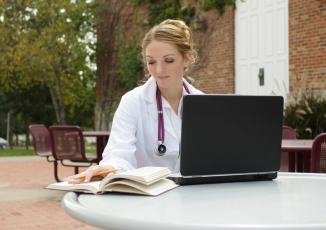Leading Australian medical faculties will unveil a world-first model for health care education utilising next-generation educational technology to improve access and outcomes for students, healthcare professionals and patients.
The $4.5 million Biomedical Education Skills and Training Network, the BEST Network, will be officially launched at the University of Melbourne on Friday, October 18 at The Future of Medical Education symposium.
The Network’s founding members – UNSW, the University of Melbourne, the University of Queensland, James Cook University and partner peak bodies in medicine and nursing – are collaborating to build a world-first repository of shared digital tools and resources to greatly enhance healthcare education.
These include a large medical image bank, rich, interactive virtual laboratories, virtual patients, online scenario-based training modules and new digital tools to annotate medical images for teaching – all stored on the cloud and accessible from any internet connection.
“By collaborating in this way we can offer our students – and potentially health care students and clinicians anywhere in the world – access to the best possible eLearning tools and resources. This will revolutionise the way we teach, learn and practice,” says Professor Nick Hawkins, BEST project lead and Head of UNSW’s School of Medical Sciences.
“As individual institutions this would be prohibitively expensive. However, digital technology now enables us to share our collective best with anyone in the world.”
The BEST Network resources are built on top of the Smart Sparrow Adaptive eLearning platform – invented at UNSW, and now in use in hundreds of university courses in Australia and the US and due to be introduced into science education across Australian high schools.
Unlike the first generation of online learning tools that were limited to one-way videos or lectures, PDFs and multiple choice questions, adaptive eLearning enables students to work in interactive, virtual worlds and to receive feedback based on their individual capabilities as they progress. For teachers, adaptive eLearning technology identifies what students understand, and what is proving challenging, so that teaching can be constantly refined to improve outcomes.
Smart Sparrow CEO, Dr Dror Ben-Naim, says a hospital trial using a virtual patient to train nurses in defibrillation, for example, helped reduced average response times from 1.4 minutes to 1.2 minutes, when every second is critical for recovery.
Dr Ben-Naim says the BEST Network’s shared vision is that every teacher and student, no matter where they are, should have access to the best possible healthcare education.
“The BEST Network resources and the internet make it possible for trainee and practicing doctors, nurses and health professionals from Cambodia to New York and from Melbourne to the outback to have equal access to quality medical resources and tools to save lives and alleviate suffering.”
He says the BEST Network is the world’s first collaborative online cloud based healthcare education model. The Network membership will be open to new members soon after the launch. It has already attracted interest from top international universities, such as Harvard, and global health care philanthropists such as the Bill & Melinda Gates Foundation.
The media are invited to attend the launch or to conduct phone interviews
BEST Network founding partners are:
- The University of New South Wales (UNSW Medicine)
- The University of Melbourne (UoM Medicine and Health Sciences)
- James Cook University (JCU Medicine)
- The University of Queensland (UQ Biomedical Sciences and Nursing and Midwifery)
- The Royal College of Pathologists of Australia
- The Australian College of Nursing
Media contacts: Louise Williams, UNSW Medicine, 0407 061 209, louise.williams@unsw.edu.au; Jacqui Hayes, Smart Sparrow, 0402 447 150, jacqui@smartsparrow.com


